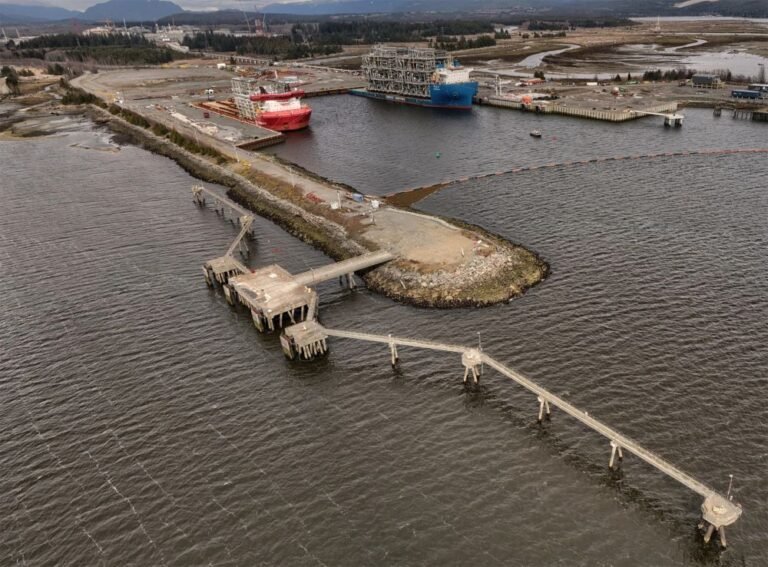LNG Canada Commences Operations with First LNG Cargo Departure
With the first liquefied natural gas (LNG) cargo out of the way, LNG Canada, a joint venture company encompassing Shell, Petronas, PetroChina, KOGAS, and Mitsubishi, has begun operations at its giant LNG export terminal in Kitimat, Canada’s British Columbia.
While disclosing the departure of the first cargo on the west coast of Canada from LNG Canada, said to be the country’s first large-scale LNG export project, Shell Canada Energy (operator with a 40% stake), an affiliate of the UK-headquartered Shell, emphasizes that exports from LNG Canada are well-positioned to play a crucial role in global decarbonization efforts, as Asian markets transition away from coal.
The operator of the project describes LNG as a lower-carbon alternative to coal when used for electricity generation and a partner for intermittent renewables. Located in Kitimat, British Columbia, the facility will export LNG from two processing units or trains with a total capacity of 14 million tonnes per annum (mtpa).
Shell’s Strategic Outlook
Cederic Cremers, Shell’s President of Integrated Gas, commented: “LNG Canada grows our leading integrated gas portfolio, providing a reliable supply of LNG to markets, most notably in Asia. We expect that supplying LNG will be the biggest contribution Shell will make to the energy transition over the next decade, and projects like LNG Canada position our portfolio to achieve this.”
Shell’s LNG Outlook 2025 forecasts that global demand for LNG is set to rise by around 60% by 2040, largely driven by economic growth in Asia. The company revealed at Capital Markets Day 2025 its plans to reinforce its leadership position in liquefied natural gas by growing sales by 4-5% per year through to 2030.
Future Expansion Plans
Therefore, LNG Canada’s strategic location on Canada’s Pacific Coast is said to connect cost-competitive upstream gas from British Columbia to growing Asian demand, delivering a competitive, secure, and reliable source of energy in partnership with local communities and First Nations.
While each LNG Canada joint venture participant will provide its natural gas supply and individually off-take and market their respective share of LNG from the project, all LNG produced at the facility will be provided to Shell and the other joint venture participants.
The operator underlined that over 50,000 Canadians worked on the LNG Canada venture with more than CAD 5.8 billion (over $4.26 billion) in contracts and subcontracts to local, Indigenous-owned, and other businesses in British Columbia.
Shell highlights that this project includes an option for a future Phase 2 expansion, which could entail the construction of two additional LNG trains, bringing total capacity to 28 mtpa. Canada has seven LNG export projects and one infrastructure project in various stages of development, representing a possible capital investment of almost $109 billion and a potential production capacity of 50.3 mtpa of LNG.
Upcoming LNG Projects in Canada
In addition, there are four LNG liquefaction facilities and two LNG import facilities operating in the country that serve the domestic market, mostly at low volumes. The majority of these LNG projects are targeting the start of operations between 2027 and 2030.

